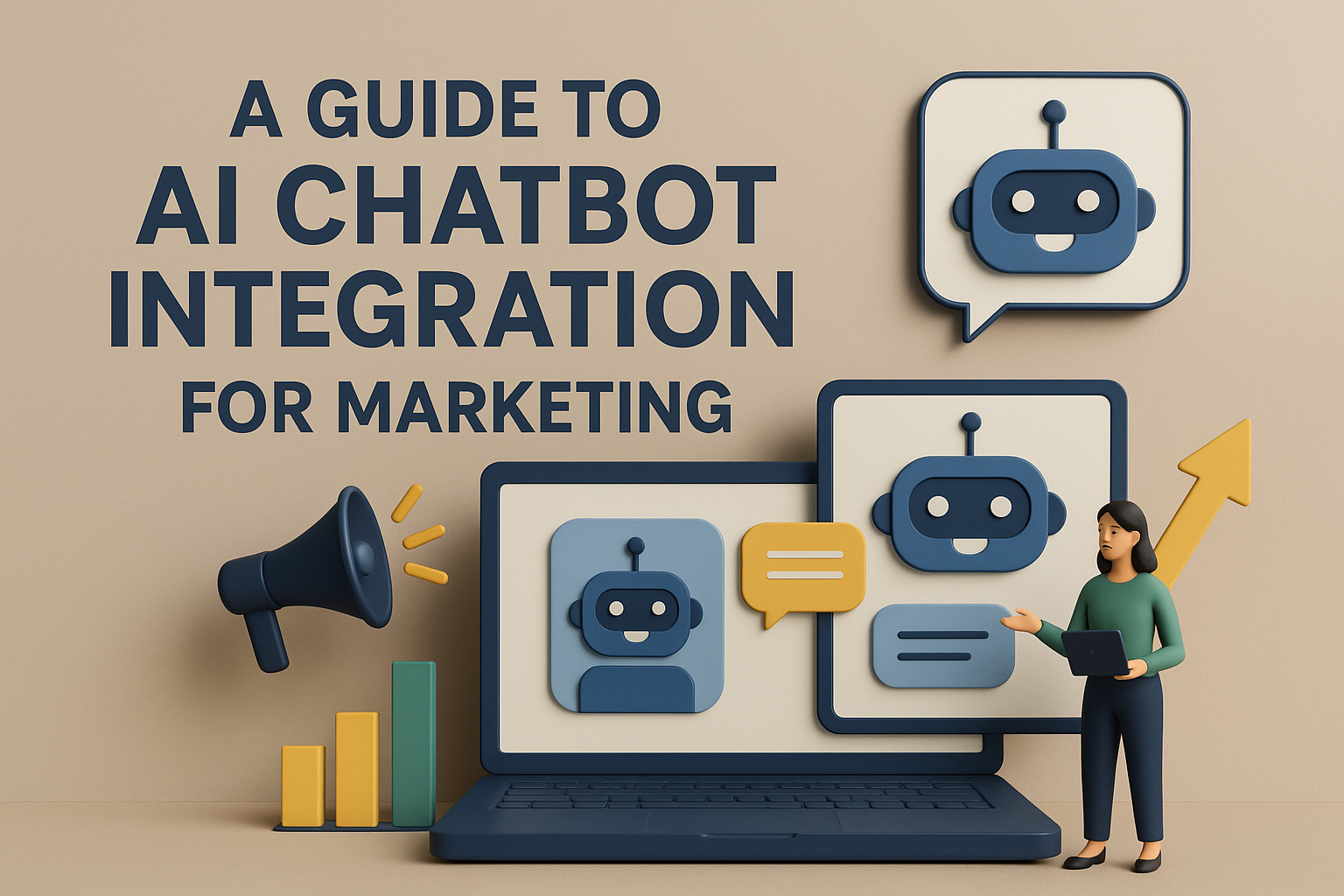The search engine results page (SERP) is less a list of blue links and more a dynamic, AI-powered answer engine. Google, driven by advanced Natural Language Processing (NLP) and Large Language Models (LLMs), no longer just reads your keywords—it understands your content’s meaning, context, and the full intent of the user.
If your SEO strategy is still rooted in keyword density and single-page optimization, you’re already losing ground. The future of search belongs to Semantic SEO, a holistic approach that builds topical authority and earns a seat at the table with AI Overviews and conversational search results.
Here are the five Semantic SEO Strategies 2026 you must implement now to not just survive, but dominate the first page of the SERP.
1. The Death of the Single Keyword: Master Topic Clustering
The most fundamental shift in semantic SEO is moving from targeting single keywords to mastering Topic Clusters. This strategy aligns perfectly with how modern search engines—and AI—comprehend a subject.
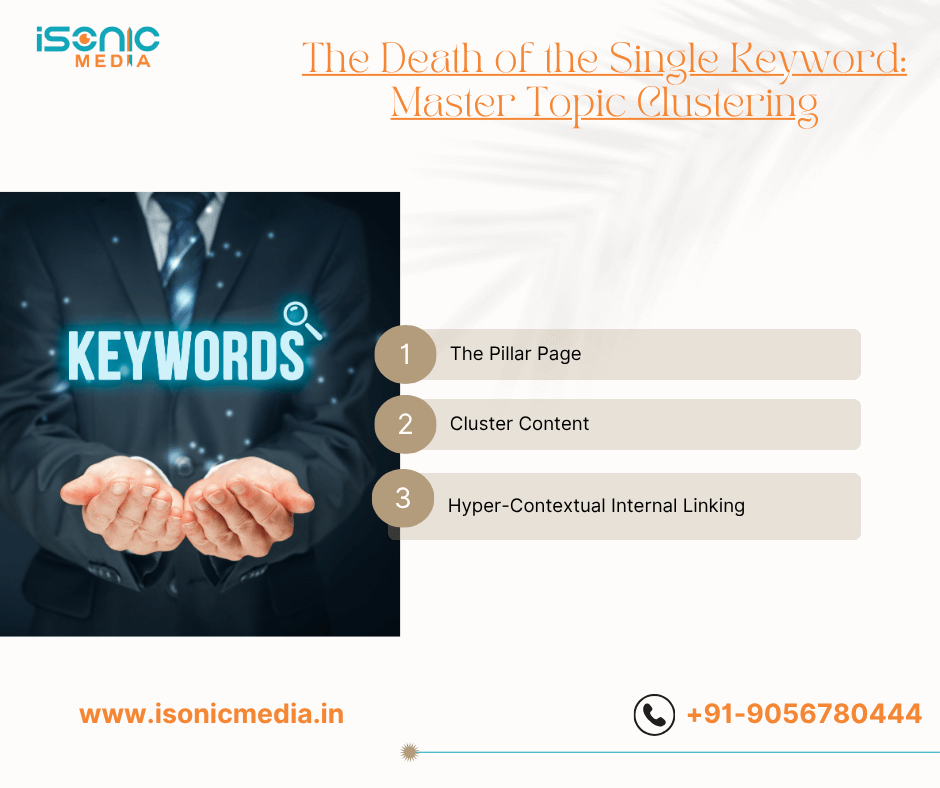
The Strategy:
- The Pillar Page: Create one comprehensive, long-form content piece (the “pillar”) that broadly covers a high-level subject. Think of this as your main guide on “Semantic SEO.”
- Cluster Content: Develop numerous, detailed sub-pages (the “clusters”) that dive deep into specific related topics. Examples for the pillar above would be “How to Implement Schema Markup,” “Understanding Search Intent Types,” or “Optimizing for Google’s Knowledge Graph.”
- Hyper-Contextual Internal Linking: Link all cluster pages back to the pillar page, and link related cluster pages to each other, using semantically rich anchor text. This architecture establishes your website as an exhaustive, authoritative source on the entire topic, telling search engines your content has deep topical authority.
Why it Works in 2026: Google’s algorithms reward depth. A topic cluster demonstrates you have not just one good article, but a complete library of expert information. This holistic view is a key signal for earning trust and authority in the age of generative AI.
2. E-E-A-T is Your Semantic Trust Signal
In a world flooded with AI-generated content, the human element—your authenticity and credibility—is the ultimate differentiator. The E-E-A-T framework (Experience, Expertise, Authoritativeness, and Trustworthiness) is not just a guideline; it is a critical ranking factor in 2026.
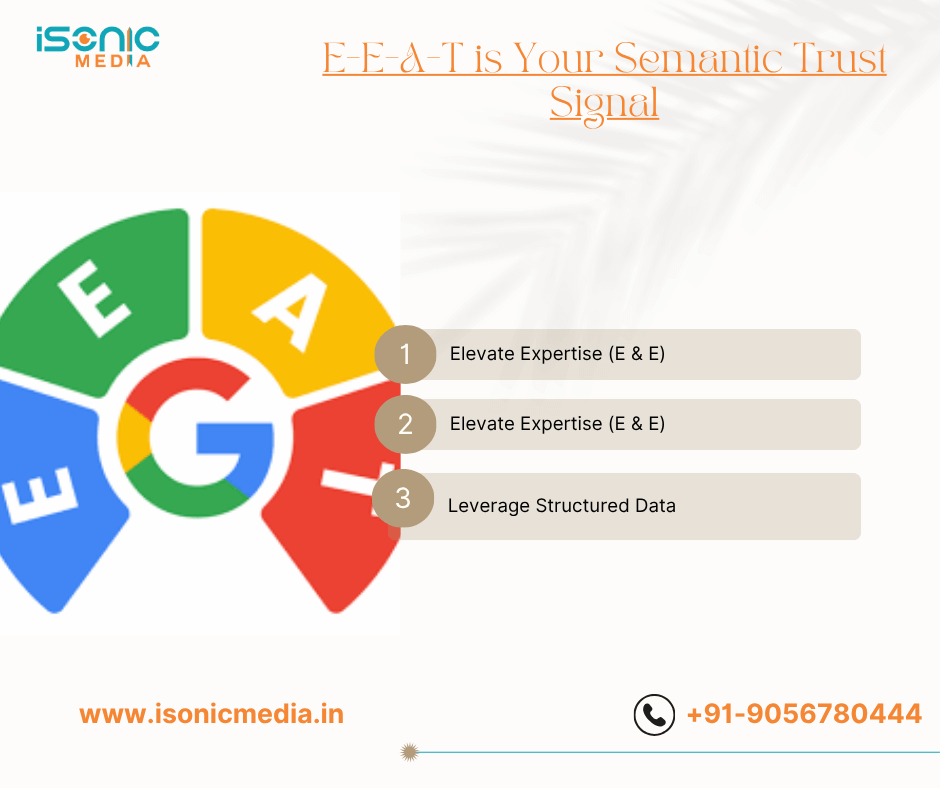
The Strategy:
- Elevate Expertise (E & E): Ensure every article is backed by a credible author. Add detailed, named author bios with real-world credentials, social proof, and links to their work. Show evidence of Experience—use proprietary data, screenshots of original work, and genuine case studies.
- Build Authority and Trust (A & T): Actively pursue high-quality, contextual backlinks from recognized industry leaders. More importantly, focus on earning brand mentions and citations from non-linking, authoritative sources. Google’s Knowledge Graph heavily links known entities (brands, people) to your content, making public credibility a direct semantic ranking signal.
- Leverage Structured Data: Use
Article,FAQPage, andPersonschema markup to explicitly tell search engines who wrote the content, what their credentials are, and why they are a trustworthy source.
Why it Works in 2026: E-E-A-T acts as a filter against low-quality, mass-produced text. Generative AI models are trained on content, but they still need human-validated, trustworthy sources to cite in their own answers. Positioning yourself as that validated source is essential.
3. Optimize for AI Overviews (Generative Engine Optimization)
The rise of Google’s AI Overviews and other LLM-powered search assistants (like Perplexity) fundamentally changes where clicks go. To stay visible, you must pivot from simply chasing the “blue link” to aiming for “Position Zero” and inclusion within the summary itself. This is the core of Generative Engine Optimization (GEO).
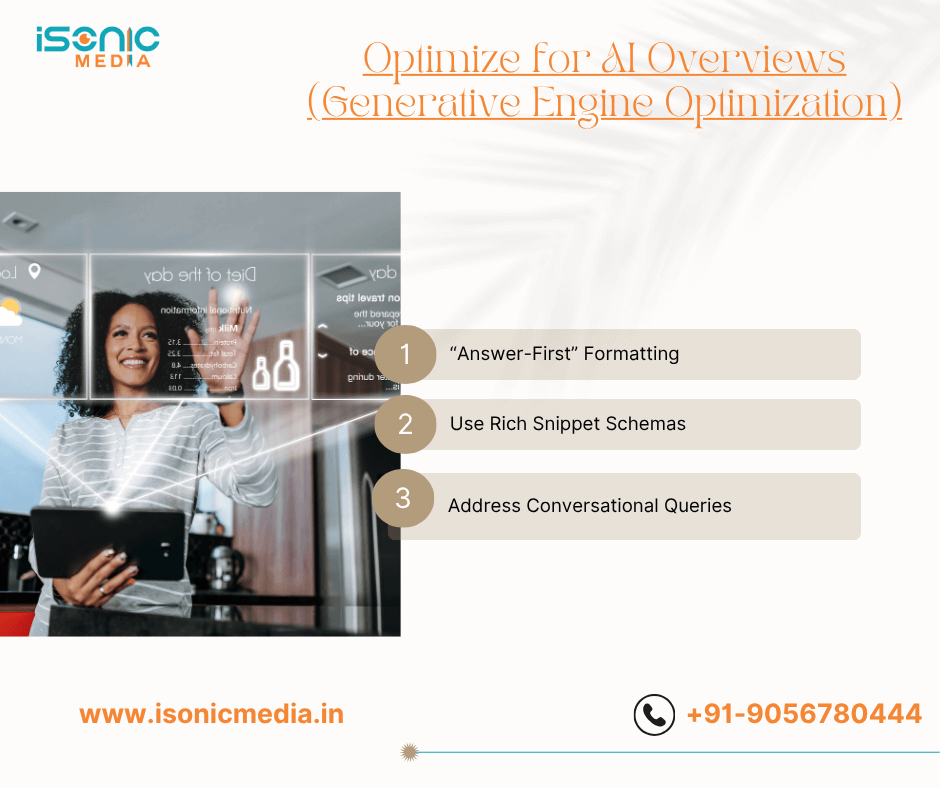
The Strategy:
- “Answer-First” Formatting: Structure your content to provide a concise, direct answer (1-3 sentences) immediately below your main heading, followed by the comprehensive explanation. This format is perfect for AI models to easily extract and cite.
- Use Rich Snippet Schemas: Prioritize using the most effective structured data for rich results, which are common sources for AI Overviews:
FAQPageSchema: For question/answer-style content.HowToSchema: For step-by-step guides.TableandListSchema: For clear, scannable data.
- Address Conversational Queries: Since voice and conversational search are key inputs for AI, embed natural, question-based headings (
H2,H3) in your content that mirror how a person would ask a question (e.g., “What are the benefits of Schema Markup?”).
Why it Works in 2026: By providing the clearest, most structured, and most quotable answer, you increase the likelihood of your content being chosen as a primary citation for the AI-generated summary, driving a powerful stream of high-intent traffic.
4. Semantic Keyword Mapping and NLP
In 2026, keywords are not about frequency; they are about contextual relevance. Semantic keyword mapping is the process of identifying terms that establish the topic’s context without needing exact-match phrases.
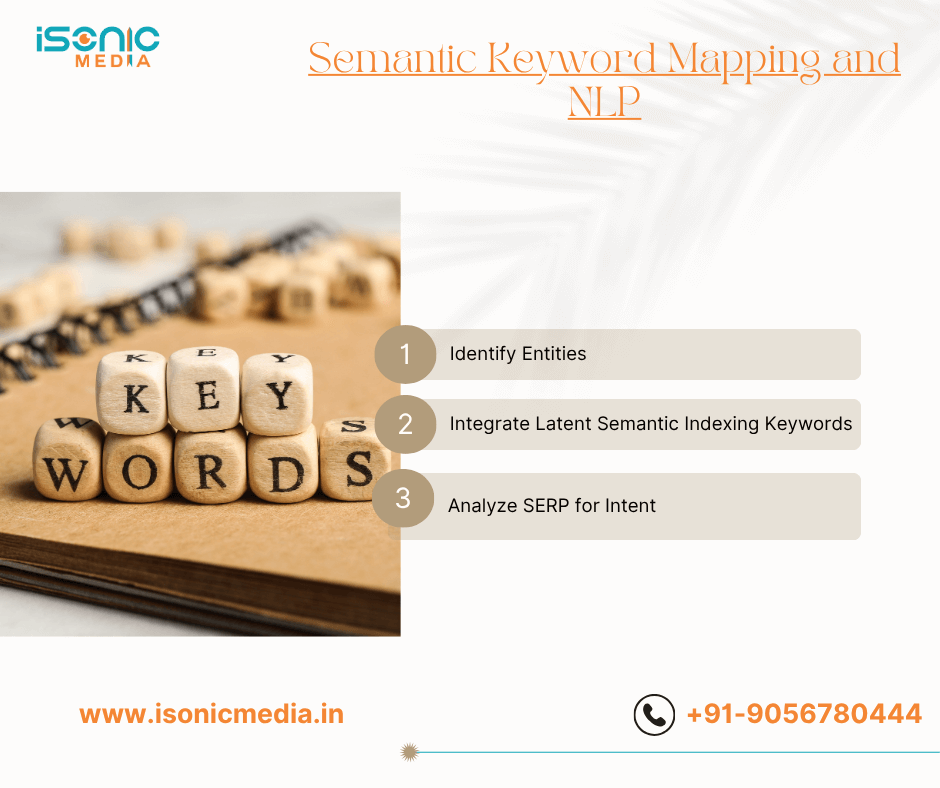
The Strategy:
- Identify Entities: An “entity” is a concrete concept, person, place, or thing that is universally understood (e.g., “Google,” “Knowledge Graph,” “Schema Markup”). Ensure your content naturally mentions all relevant entities that define your topic.
- Integrate Latent Semantic Indexing (LSI) Keywords: These are words and phrases that are semantically related to your core topic. If your main topic is “Semantic SEO,” LSI keywords would include “Natural Language Processing,” “Topic Modeling,” “Search Intent,” and “Structured Data.” Their inclusion signals to NLP models a deep, comprehensive understanding of the subject.
- Analyze SERP for Intent: Before writing, analyze the top-ranking pages. Are they selling a product (Transactional Intent), offering a guide (Informational Intent), or comparing options (Commercial Intent)? Your content’s format and tone must match the dominant intent of the SERP to rank.
Why it Works in 2026: Google’s NLP algorithms use these contextual clues to verify the true meaning of your page. Content that correctly uses relevant entities and LSI terms ranks for a broader range of related long-tail queries, capturing full topic coverage.
5. Prioritize Technical SEO for Semantic Clarity
Semantic SEO is only as effective as your site’s technical foundation. A fast, well-structured site makes it easier for search engine bots and AI models to crawl, understand, and index your semantic signals.
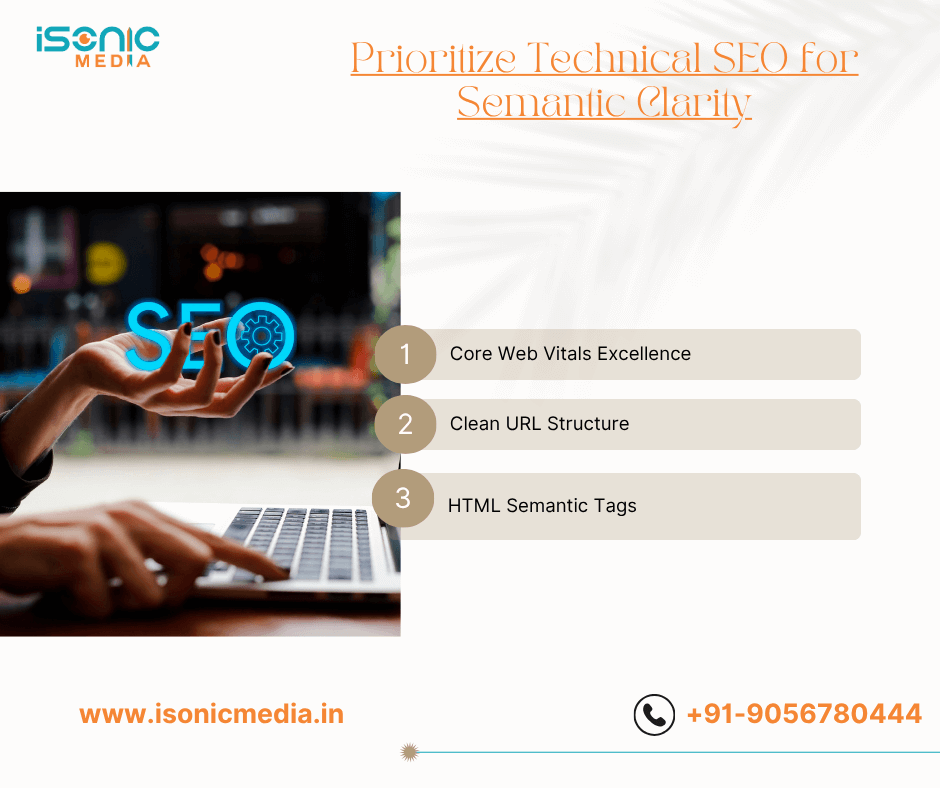
The Strategy:
- Core Web Vitals Excellence: Ensure your site achieves “Good” status on all Core Web Vitals (LCP, FID, CLS). Speed and stability are non-negotiable semantic signals because they directly impact user experience, which is a core search ranking factor.
- Clean URL Structure: Use descriptive, simple URLs that clearly communicate the topic of the page (e.g.,
/semantic-seo-strategies-2026). - HTML Semantic Tags: Use HTML tags correctly and strategically. Use
<h1>for the main topic,<h2>for sub-topics,<h3>for sub-points, and appropriate tags like<figure>or<details>to provide additional semantic meaning to your content structure. This clarity is a direct aid to NLP parsing.
Why it Works in 2026: Technical SEO ensures your content’s meaning is delivered efficiently. By structuring your content with clear HTML and rapid load times, you give search engines and AI the best chance to accurately interpret your topical authority, significantly boosting your chances for a first-page ranking.
The shift to Semantic SEO Strategies 2026 is not an optional update—it’s a prerequisite for visibility. By moving beyond simple keyword matching and embracing topical authority, structured data, E-E-A-T, and AI-friendly formatting, you future-proof your website and earn the trust required to dominate the next generation of search. The era of meaning-based ranking is here. Will you lead or be left behind?


